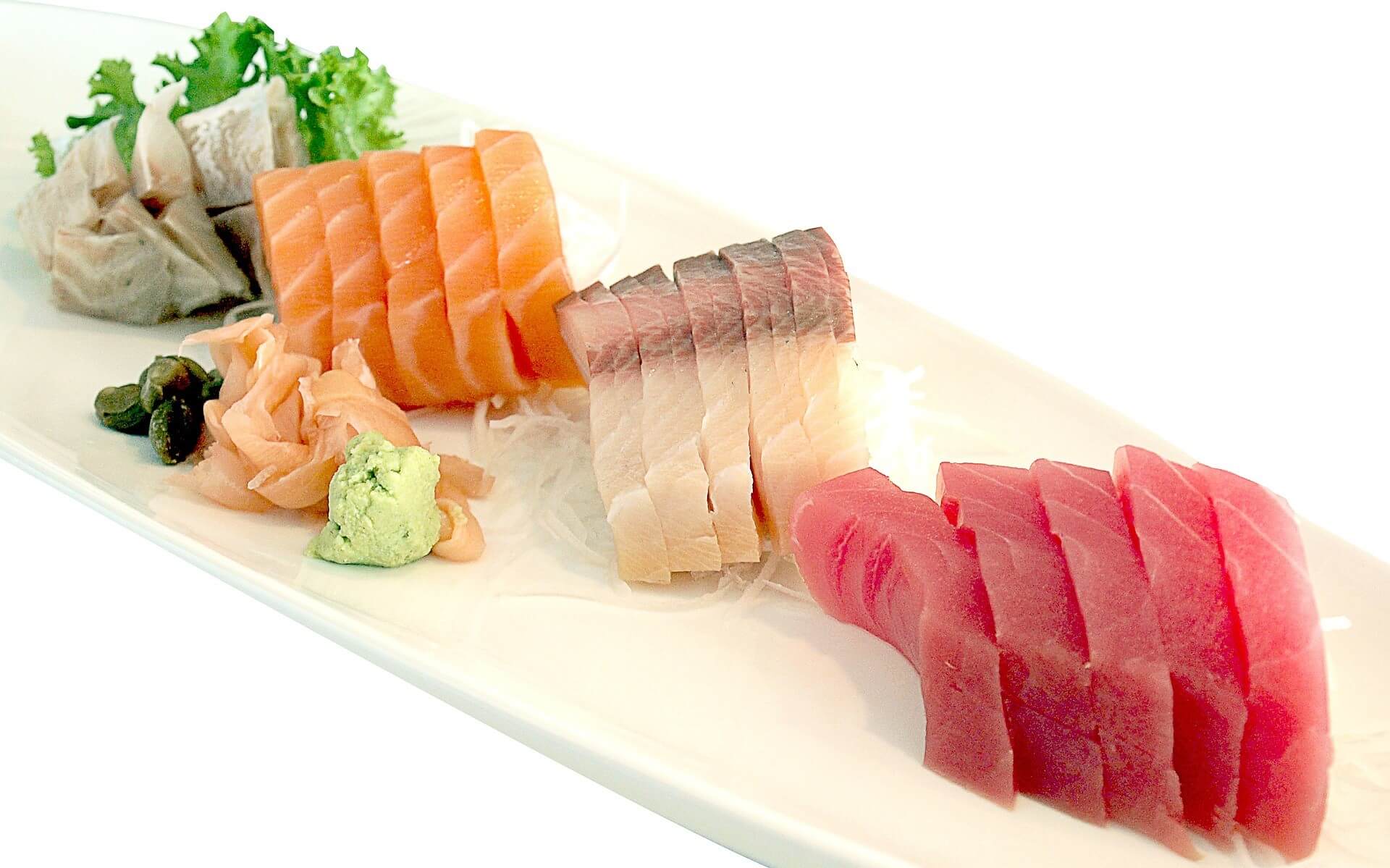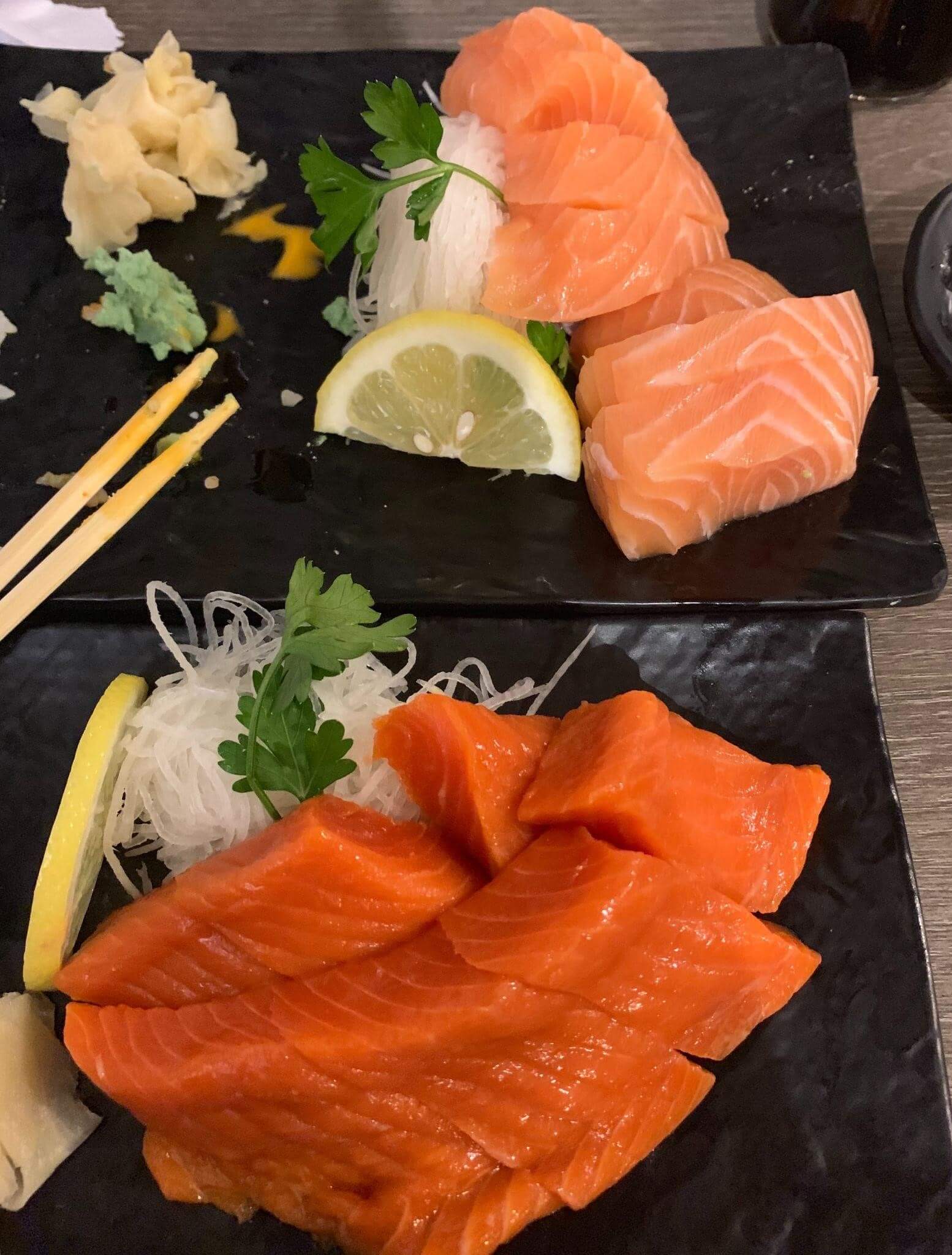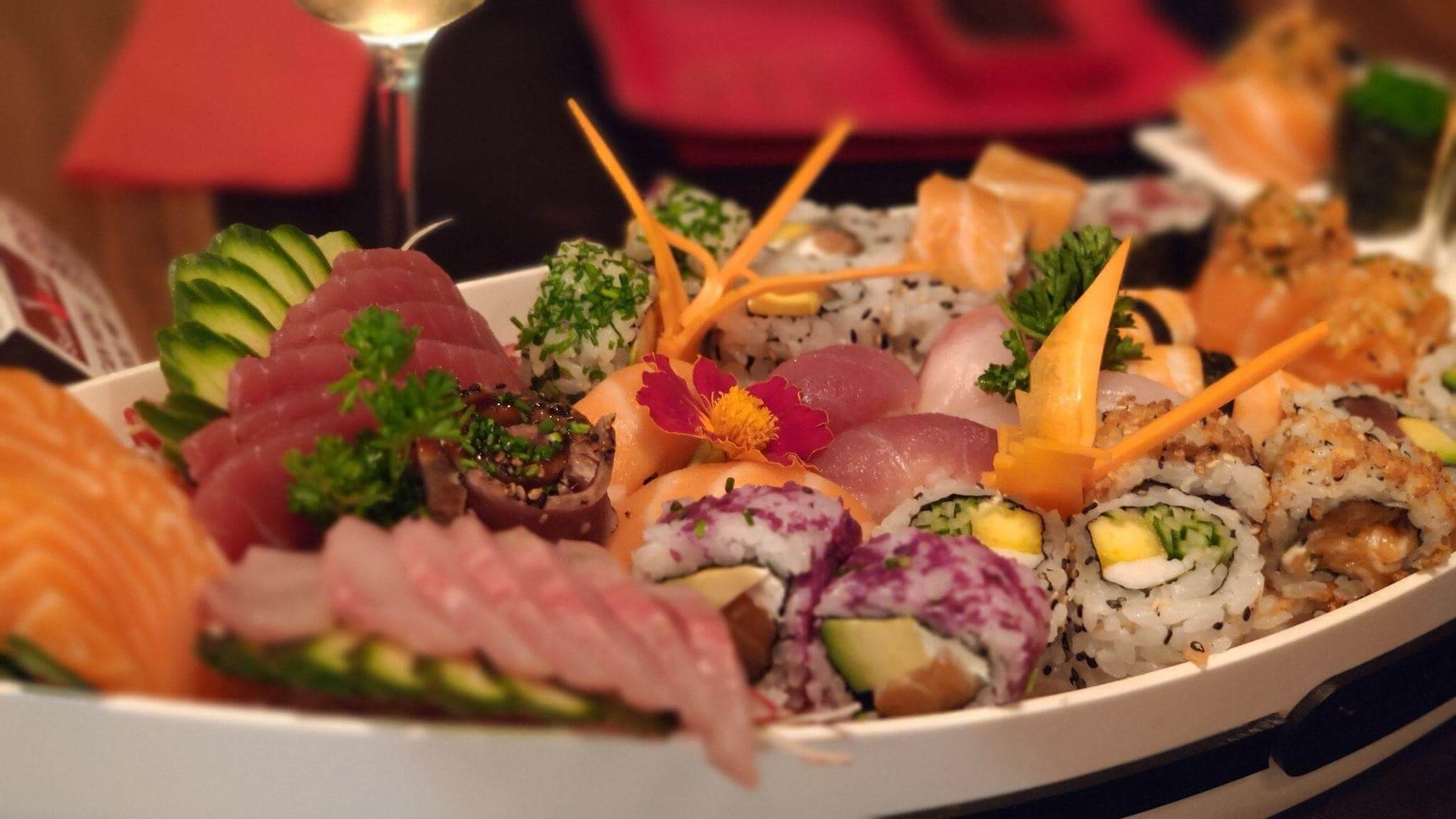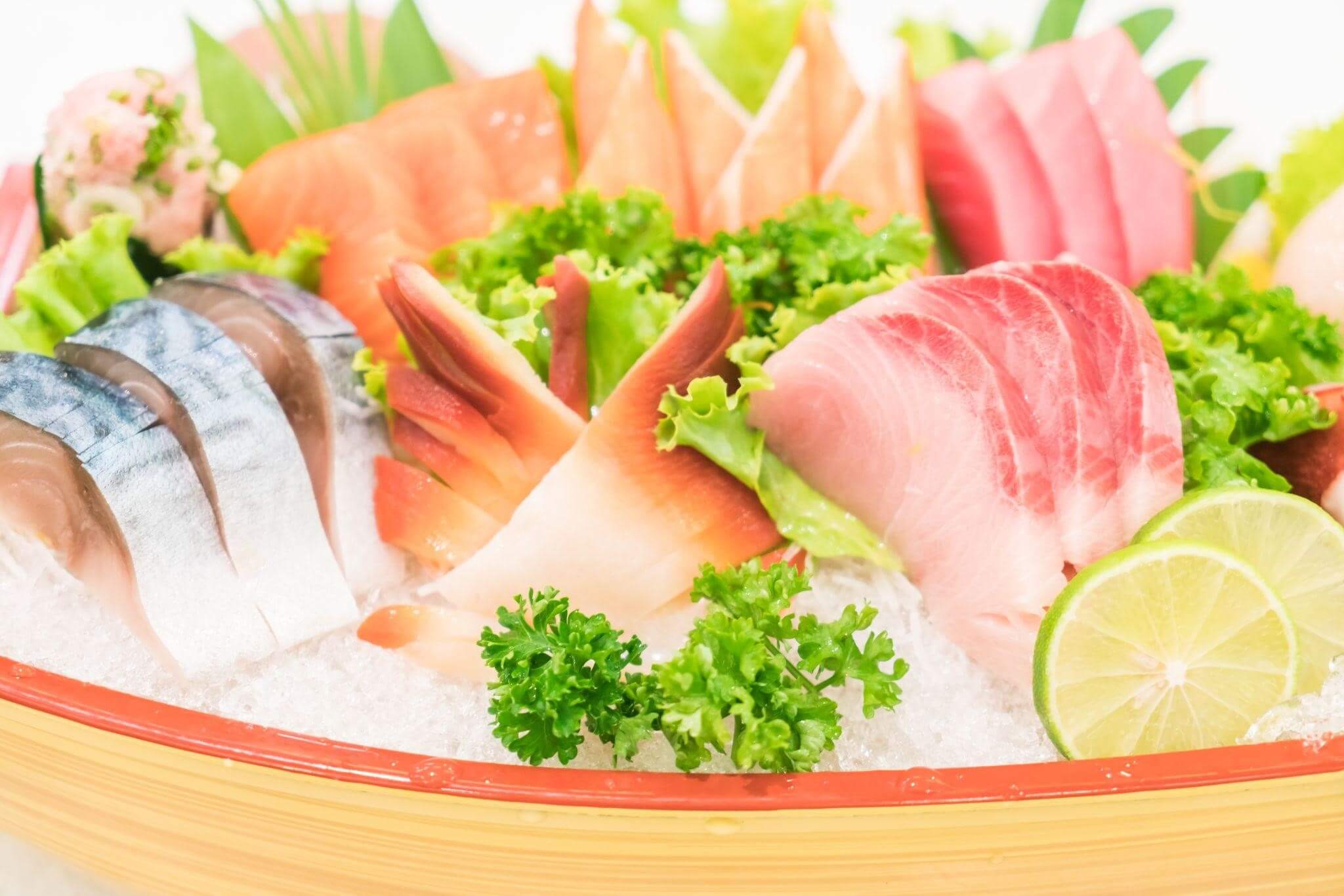

EASTER ORDERS ARE CLOSED!
Wishing everyone a Happy Easter



Fresh Sashimi on Ice
Have you ever wondered, what is sashimi? Dive into the world of this exquisite Japanese dish with us, and explore the delicate flavours and textures that make it a favourite among seafood lovers. As one of Australia’s premier seafood marketplaces, Manettas Seafood Market brings you an in-depth look into the world of sashimi, including popular sashimi dishes; how to enjoy them; and the difference between sushi and sashimi.
Sashimi is a traditional Japanese dish that consists of thinly sliced raw seafood, such as tuna or salmon, served without rice. The word “sashimi” means “pierced body” or “pierced fish”, which reflects the art of slicing the fish. Sashimi is commonly served as a light meal or appetiser, often accompanied by soy sauce, wasabi paste, and pickled ginger. It is separate from sushi, which involves vinegared rice and may include cooked ingredients or raw fish.

Fresh Tuna Sashimi
Sashimi is known for its simplicity and focuses on high-quality, fresh ingredients. The fish or seafood used in sashimi must be of the highest quality, known as “sashimi-grade” or “sushi-grade fish”. This ensures that the raw fish is safe to eat and provides the best taste and texture.

Different kinds fish for sashimi
The most popular types of fish for sashimi are tuna and salmon, but many other types of fish and seafood can be used. Some other options include:
If you want to eat sashimi, it is important to choose high quality fish, as this will significantly impact the taste and quality of the sashimi. The fish should be handled carefully and kept cold to avoid food poisoning. Many people prefer saltwater fish for sashimi, as freshwater fish can sometimes carry harmful parasites when eaten raw. Farmed salmon is generally considered safe to eat raw, as it is unlikely to contain parasites.

Thinly sliced salmon for sashimi
Slicing fish for sashimi requires a sharp knife, typically a “sushi knife”, and a skilled hand. The fish is cut into thin slices or strips, with various techniques used depending on the type of fish and desired presentation. Some common slicing styles include:
Eating sashimi is a sensory experience that involves appreciating the dish’s taste, texture, and presentation. Here are some tips to help you enjoy your sashimi to the fullest:

A plate of sashimi with pickled ginger and wasabi paste
Sashimi is served raw and often comes with soy sauce, wasabi paste, and pickled ginger. The soy sauce is a dipping sauce, adding a salty, umami flavour. Wasabi paste, made from the Japanese horseradish plant, adds a spicy kick. At the same time, pickled ginger is used as a palate cleanser between bites.
However, it is important not to overpower the delicate taste of the fish with too much soy sauce or wasabi. Many prefer to use only soy sauce or a tiny amount of wasabi paste to let the fish’s natural flavours shine.

Japanese cuisine in a plate: Sashimi Sushi
While both sashimi and sushi are beloved Japanese dishes, they have key differences. Sashimi consists of thinly sliced raw fish or seafood, served without rice. Sushi, on the other hand, typically involves vinegared rice and may include a variety of ingredients, such as cooked seafood, raw fish, vegetables, and even tropical fruits and raw meat as well. There are several types of sushi, including nigiri sushi, which features a small mound of rice topped with a piece of raw fish or other ingredients.
Sashimi is often a light appetiser, while sushi can be a more substantial meal. Both sashimi and sushi can be found at Japanese restaurants worldwide, with many offering a selection of both to cater to various tastes.
Sashimi is not only delicious but also offers several health benefits. The raw fish in sashimi is a great source of lean protein, omega-3 fatty acids, and essential vitamins and minerals. These nutrients contribute to a healthy heart, brain, and immune system. Here are some examples of the health benefits of popular sashimi fish:
However, it’s essential to ensure that you choose fresh, high-quality fish and consume it in moderation.

Different kinds of Sashimi: Fatty belly meat from bluefin tuna, oysters with salmon roe with green onions, and sea urchin with buttery flavour
While sashimi is most commonly made with fish, other raw meats can also be used. For example, beef liver, known as “reba sashi” in Japan, is sashimi made from thinly sliced raw beef liver. Chicken sashimi, or “tori sashi”, is another example. However, it is less common due to the higher risk of foodborne illness associated with raw poultry. However, these variations are less popular outside of Japan and may be less readily available in Australian Japanese restaurants.
If you’re feeling adventurous and want to try making sashimi at home, follow these steps for a delicious and safe experience:

Different fish contents sashimi in a bowl
Now that you have a better understanding of what sashimi is, you can now appreciate the artistry and skill of creating this delectable dish. Whether you’re enjoying sashimi at a Japanese restaurant or trying your hand at making it at home, remember to savour the fresh flavours, delicate textures, and beautiful presentation that make sashimi a culinary delight.
With Manettas Seafood Market, you can source fresh, high-quality fish for all your sashimi needs. Explore our selection of sashimi-grade fish and other seafood today. Enjoy the finest ocean taste from the comfort of your home. As a trusted online seafood marketplace, Manettas Seafood Market connects consumers, chefs, and seafood wholesalers to fishmongers across Australia, ensuring a seamless and enjoyable seafood shopping experience.
In summary, sashimi is a delicate and delicious Japanese dish showcasing raw fish and seafood’s natural flavours and textures. With its simplicity and focus on high-quality ingredients, sashimi has earned a special place in the hearts of food lovers worldwide. So, the next time you’re dining at a Japanese restaurant or planning a special meal at home, consider including sashimi as a delightful and healthy option for you and your guests to enjoy.